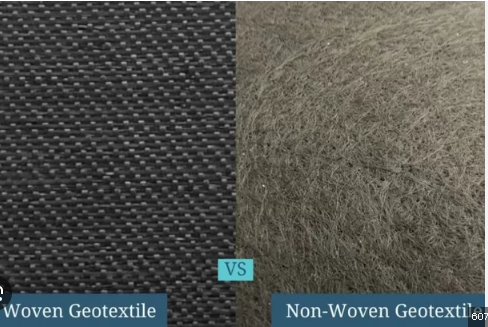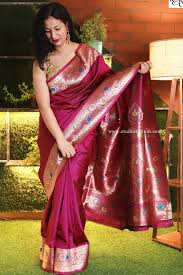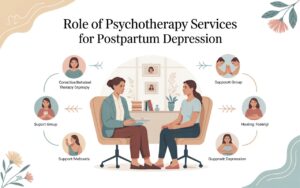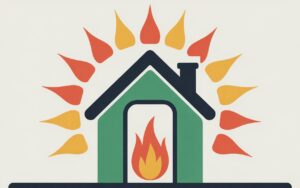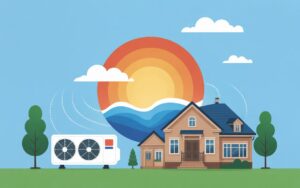Landscape fabric plays a crucial role in gardening, landscaping, and construction by providing weed control, soil stabilization, and moisture regulation. However, not all landscape fabrics are the same. The two main types—woven and non-woven landscape fabric—serve different purposes and offer distinct advantages.
Selecting the right type of landscape fabric depends on factors such as weed suppression, water permeability, durability, and application needs. In this guide, we will compare woven vs. non-woven landscape fabric, discussing their pros, cons, and ideal use cases to help you make an informed decision for your project.
1. What Is Landscape Fabric?
Landscape fabric is a permeable textile material designed to control weeds, retain soil moisture, and improve soil stability. It is widely used in gardening, agriculture, and construction to reduce maintenance efforts and improve plant health.
There are two main categories of landscape fabric:
Woven Landscape Fabric – Made by weaving synthetic fibers together to create a durable and breathable material.
Non-Woven Landscape Fabric – Constructed from bonded synthetic fibers, offering superior water filtration and erosion control.
Each type has specific benefits and applications, which we will explore in detail.
2. Woven Landscape Fabric: Overview, Pros & Cons
What Is Woven Landscape Fabric?
Woven landscape fabric is made by interlacing polypropylene or polyester fibers, creating a grid-like pattern that allows water and air to pass through. It is primarily used for weed control and soil stabilization in gardening, pathways, and agricultural fields.
Pros of Woven Landscape Fabric
✔ Excellent Weed Control – The tightly woven design blocks sunlight, preventing weed growth.
✔ Durable and Long-Lasting – Strong and resistant to wear, making it suitable for high-traffic areas.
✔ Permeable to Water and Air – Allows essential nutrients to reach plant roots while controlling moisture levels.
✔ Prevents Soil Erosion – Stabilizes soil, especially in slopes and agricultural fields.
✔ Ideal for Commercial Use – Widely used in farms, greenhouses, and large garden landscapes.
Cons of Woven Landscape Fabric
❌ Limited Water Permeability – Though breathable, woven fabric may restrict water flow in areas with heavy rainfall.
❌ Prone to Fraying Over Time – The woven structure may weaken and unravel if not properly secured.
❌ May Compete with Plant Roots – Some plants may struggle to penetrate the fabric, limiting root expansion.
❌ Decomposing Organic Matter Can Build Up – If covered with mulch, decomposing material can create a layer where weeds may grow.
Best Uses for Woven Landscape Fabric
✅ Garden Beds and Flower Beds – Provides excellent weed control while allowing moisture to reach the soil.
✅ Pathways and Walkways – Prevents weeds from growing through gravel, stone, or pavers.
✅ Agricultural Fields – Used for weed suppression and soil stabilization in crop fields.
✅ Greenhouses – Commonly used in commercial greenhouses for improved weed control and soil health.
3. Non-Woven Landscape Fabric: Overview, Pros & Cons
What Is Non-Woven Landscape Fabric?
Non-woven landscape fabric is made by bonding synthetic fibers through heat or needle punching, creating a solid sheet-like structure. Unlike woven fabric, it is less permeable but offers superior filtration, drainage, and erosion control.
Pros of Non-Woven Landscape Fabric
✔ Superior Water Filtration – Allows water to flow through while preventing soil erosion.
✔ Strong and Tear-Resistant – Durable and suitable for heavy-duty landscaping projects.
✔ Ideal for Drainage Applications – Used in retaining walls, drainage systems, and erosion-prone areas.
✔ Blocks Weed Growth Effectively – Provides excellent weed suppression when properly installed.
✔ Reduces Soil Compaction – Helps prevent soil compaction in high-traffic areas.
Cons of Non-Woven Landscape Fabric
❌ Less Breathable for Plant Roots – Does not allow as much air and moisture exchange, potentially affecting plant health.
❌ Not Ideal for Garden Beds – Since it limits airflow, it can hinder the growth of plants with deep roots.
❌ Higher Cost Compared to Woven Fabric – More expensive due to its advanced filtration and durability features.
❌ Can Be Difficult to Cut and Install – Requires precision and proper tools for installation.
Best Uses for Non-Woven Landscape Fabric
✅ Drainage Systems – Used in French drains, retaining walls, and roadside drainage projects.
✅ Erosion Control – Prevents soil erosion on slopes, riverbanks, and construction sites.
✅ Under Hardscaping Materials – Used beneath patios, pavers, and driveways to prevent soil movement.
✅ Commercial and Heavy-Duty Landscaping – Ideal for large-scale projects that require long-lasting fabric.
4. Key Differences Between Woven and Non-Woven Landscape Fabric
Feature Woven Landscape Fabric Non-Woven Landscape Fabric
Material Composition Interwoven polypropylene fibers Bonded synthetic fibers
Water Permeability Moderate, allows slow water absorption High, ideal for drainage applications
Weed Control Effective for suppressing weed growth Excellent, prevents most weed penetration
Durability Strong, but can fray over time Highly durable and tear-resistant
Best Use Cases Garden beds, pathways, greenhouses, agriculture Drainage systems, erosion control, construction sites
Breathability Allows air and moisture exchange Limited breathability for plant roots
Cost Generally affordable Higher cost due to superior strength and filtration
Both types of fabric have their strengths and weaknesses. The best choice depends on the specific needs of your landscaping or construction project.
5. How to Choose the Right Landscape Fabric for Your Project
1. Consider Your Primary Purpose
✔ If weed control is the top priority → Woven fabric is ideal.
✔ If water drainage and filtration are needed → Non-woven fabric is the better option.
✔ For heavy-duty erosion control in construction → Choose non-woven fabric.
2. Assess the Soil and Climate Conditions
✔ In dry climates, woven fabric helps retain moisture.
✔ In wet regions, non-woven fabric improves water drainage and prevents soil erosion.
3. Think About Longevity and Maintenance
✔ Woven fabric requires periodic maintenance to prevent debris buildup.
✔ Non-woven fabric lasts longer in heavy-use areas but may limit plant growth.
4. Match the Fabric to the Landscape Design
✔ For vegetable gardens → Woven fabric supports healthy root growth.
✔ For driveways or patios → Non-woven fabric prevents soil shifting.
6. Conclusion
Both woven and non-woven landscape fabrics offer excellent benefits, but their applications vary based on project needs.
Woven landscape fabric is best for garden beds, pathways, and agricultural fields, where moderate water permeability and weed control are needed.
Non-woven landscape fabric excels in drainage systems, erosion control, and construction projects, providing superior filtration and soil stability.
By understanding the pros, cons, and ideal uses of each type, you can make the best choice for your landscape project, ensuring long-term effectiveness and sustainability. Whether you’re creating a weed-free garden, installing a drainage system, or stabilizing soil, selecting the right fabric will maximize success and efficiency.

